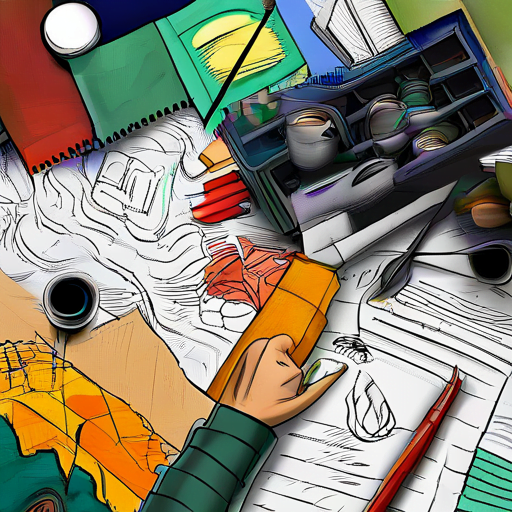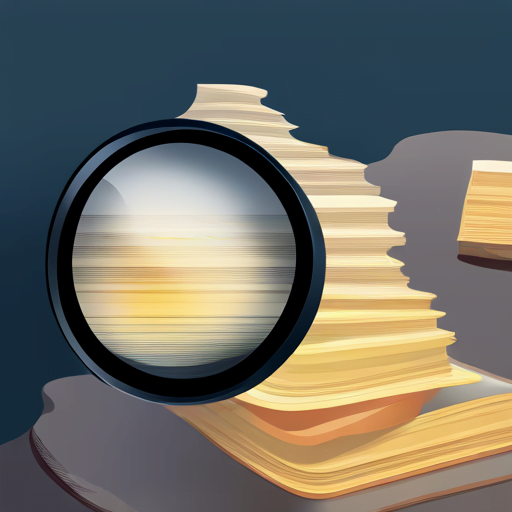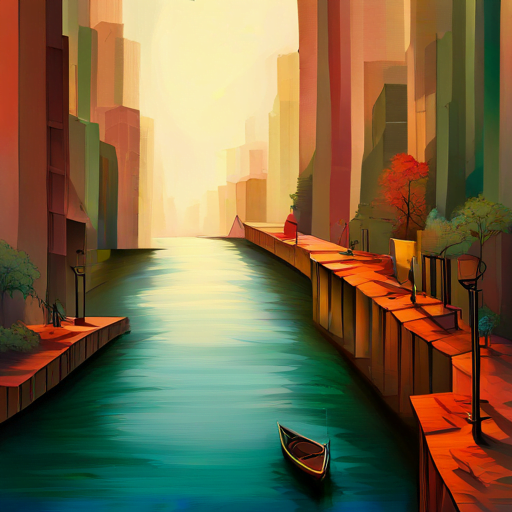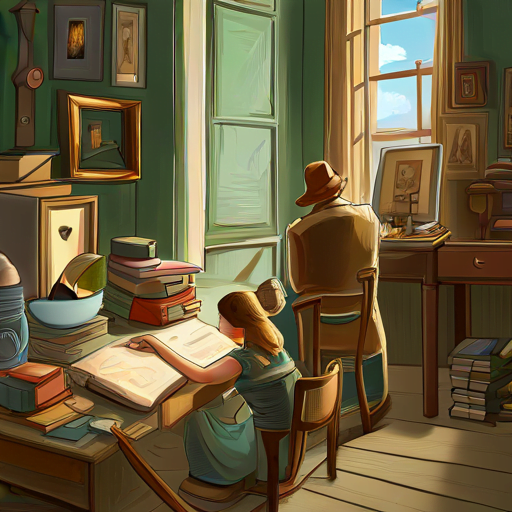When analyzing a literary work, it’s easy to get caught up in the written word and overlook the visual elements that contribute to the overall effect of the piece. However, a visual analysis can provide valuable insights into the themes, symbolism, and mood of a work.
By examining the use of color, composition, and imagery, you can gain a deeper understanding of the author’s intentions and the impact of their writing.
In this article, you’ll learn how to conduct a visual analysis of a literary work. You’ll discover how to identify and analyze visual elements, consider the relationship between visuals and text, and evaluate the effectiveness of the visuals.
By following these steps, you’ll be able to draw meaningful conclusions about the literary work and gain a new perspective on its meaning. So, grab your favorite book and get ready to dive into the world of visual analysis!
Table of Contents
Understand the Importance of Visual Analysis in Literary Works

Discover the significance of looking beyond words to appreciate the beauty of a story. Visual analysis is an important tool for understanding the deeper meaning of a literary work.
It allows you to explore the author’s use of imagery, symbolism, and other visual elements to convey their message. Visual analysis goes beyond simply reading the words on the page and delves into the complex layers of meaning that exist beneath the surface.
By examining the visual elements of a literary work, you can gain a better understanding of the author’s intentions and the themes they are exploring. This can lead to a deeper appreciation of the work and a more profound connection with its characters and ideas.
So, if you want to truly appreciate the beauty of a story, it’s essential to learn how to conduct a visual analysis.
Identify the Visual Elements in the Literary Work

You can easily spot the different images and details that bring the story to life by identifying the visual elements within it. These visual elements include the use of colors, shapes, and even the placement of objects within the story. By paying attention to the visual details in a literary work, you can better understand the author’s message and the significance of certain plot points.
One example of visual elements in a literary work is the use of color. Notice how certain colors are used to represent certain emotions or themes. For instance, the color red is often associated with passion or danger, while blue may represent calmness or sadness.
Additionally, the use of shapes can also add meaning to a literary work. A circular or spiral shape may represent unity or the cycle of life, while a sharp or jagged shape may represent tension or conflict. By recognizing these visual elements, you can gain a deeper understanding of the literary work and the themes that the author is conveying.
Analyze the Visual Elements

Let’s take a closer look at how the colors and shapes in a story can deepen our understanding of its themes and message. Analyzing the visual elements in a literary work is an important step in literary analysis.
By examining the colors, shapes, and images presented in the work, you can gain a deeper understanding of the author’s message and the themes they are trying to convey. For example, the use of color can be symbolic in a literary work. A specific color may be used to represent a particular emotion or idea.
The use of dark colors may be used to represent sadness or danger, while bright colors may be used to represent happiness or joy. Additionally, the use of shapes can also be symbolic. A circle may represent unity or wholeness, while a triangle may represent conflict or tension.
By analyzing these visual elements, you can gain a deeper understanding of the author’s intentions and how they are trying to communicate their message to the reader.
Consider the Relationship between Visual and Written Elements

It’s important to consider how the visuals and writing in a story work together to convey the author’s message. The relationship between the visual and written elements can be intricate, and it’s essential to examine how they complement or contrast each other.
The images and text can either reinforce or contradict each other’s meanings, adding layers of complexity to the narrative.
For instance, an author may use a specific color scheme in the illustrations to evoke a particular mood or emotion. The text may also use descriptive language that enhances the visual elements, creating a vivid picture in the reader’s mind.
On the other hand, the author may use images that contradict the text to challenge the reader’s assumptions or add ambiguity to the story’s meaning.
By analyzing this relationship between the visual and written elements, readers can unearth the author’s intentions and gain a deeper understanding of the literary work.
Evaluate the Effectiveness of the Visual Elements

When evaluating the effectiveness of visual elements in a literary work, you should consider how they contribute to the overall impact of the piece.
Do they enhance the written text in a successful way?
Do they add to the story and deepen the reader’s understanding of the themes and characters?
These are important questions to ask when analyzing the relationship between the visual and written elements in a work of literature.
How the Visual Elements Contribute to the Overall Impact of the Work
You can really see how the images and colors in the piece add to the overall emotional impact it has on you. The use of certain colors and images can create an atmosphere that’s either calming or intense.
For example, in a poem about a beautiful sunset, the use of warm orange and red hues can evoke a feeling of peace and tranquility, whereas the use of dark blues and grays in a poem about a storm can create a sense of unease and danger. Similarly, the use of certain images, such as a butterfly or a flower, can create a feeling of beauty and delicacy, while the use of a skull or a snake can create a sense of danger and foreboding.
The visual elements in a literary work can also help to reinforce the themes and messages of the piece. For example, in a poem about the beauty of nature, the use of vivid and lush imagery can underscore the importance of preserving the natural world. Similarly, in a poem about the horrors of war, the use of dark and violent imagery can emphasize the devastating impact of conflict.
By paying attention to the visual elements in a literary work, you can gain a deeper understanding of the author’s intentions and the emotional impact they’re trying to convey.
Whether the Visual Elements are Successful in Enhancing the Written Text
Now that you’ve learned how the visual elements contribute to the overall impact of a literary work, it’s important to evaluate whether or not these elements are actually successful in enhancing the written text.
The visual elements can include anything from illustrations, photographs, or even the layout of the text itself. The key is to determine if these elements effectively enhance the story or if they distract from it.
In order to evaluate the effectiveness of the visual elements, start by considering how they make you feel as a reader. Do they add to the mood or tone of the story, or do they take away from it?
For example, if the visual elements are meant to be dark and foreboding, but they come across as cartoonish or cheesy, they may not be successful in enhancing the written text. On the other hand, if the visual elements effectively convey the emotions of the story and add depth to the characters or setting, they can greatly enhance the reading experience.
Ultimately, the success of the visual elements will depend on how well they serve the story as a whole.
Summarize Your Findings and Draw Conclusions

Wrap it up and make sense of it all with a final takeaway that’ll leave you feeling enlightened and inspired.
After analyzing the visual elements of a literary work, it’s important to summarize your findings and draw conclusions. Consider the effectiveness of the visual elements in enhancing the written text and how they contribute to the overall meaning of the work.
Look for patterns and themes in the visuals and how they relate to the themes and motifs in the written text.
It’s also important to consider the intended audience and purpose of the visual elements. Do they appeal to the audience and enhance their understanding of the text? Do they serve a specific purpose in conveying the author’s message or theme?
By answering these questions and reflecting on your analysis, you can draw meaningful conclusions about the use of visual elements in the literary work and their impact on the overall reading experience.
Frequently Asked Questions
What is the difference between a visual analysis and a literary analysis of a work of literature?
If you’re wondering about the difference between a visual analysis and a literary analysis of a work of literature, there are a few key distinctions to keep in mind.
While a literary analysis focuses on the language, structure, and themes of a text, a visual analysis centers on the images and visual elements contained within it.
This could include things like illustrations, photographs, or other visual media that might be present in a book or other literary work.
By examining these elements closely, you can gain a deeper understanding of how they contribute to the overall meaning and impact of the work as a whole.
How do cultural and historical contexts influence the visual elements in a literary work?
To understand the visual elements in a literary work, it’s important to consider the cultural and historical contexts in which the work was created.
These contexts can influence the use of color, symbols, and other visual elements in the work, providing insight into the author’s intended meaning.
For example, in a work created during a time of political upheaval, the use of certain colors or symbols may be a commentary on the current state of society.
By examining the cultural and historical contexts of a literary work, you can gain a deeper understanding of the visual elements used and their significance in the overall meaning of the work.
What are some common mistakes to avoid when conducting a visual analysis of a literary work?
When conducting a visual analysis of a literary work, it’s important to avoid some common mistakes that can hinder your interpretation.
First, don’t rely solely on your personal assumptions and biases when interpreting the visual elements. Instead, focus on the objective information presented in the text and use it to inform your analysis.
Additionally, don’t overlook the importance of context, both within the literary work itself and in the broader historical and cultural context.
Finally, be careful not to over-interpret or read too much into the visual elements, as this can lead to inaccurate or misleading conclusions.
By avoiding these common mistakes, you can conduct a more accurate and insightful visual analysis of a literary work.
How can the use of symbolism and metaphors in a literary work be interpreted through visual analysis?
To interpret the use of symbolism and metaphors in a literary work through visual analysis, you need to pay close attention to the details.
Look for any objects, colors, or shapes that are repeated throughout the work, and consider what they might represent. For example, a red rose might symbolize love or passion, while a black crow might represent death or foreboding.
Metaphors can be a bit trickier to identify since they involve comparing two seemingly unrelated things. Look for any descriptions or comparisons that seem particularly striking or unusual, and think about what the author might be trying to convey.
By analyzing the visual elements of a literary work, you can gain a deeper understanding of the author’s message and themes.
Can visual analysis be applied to non-traditional literary forms, such as graphic novels or poetry with visual elements?
When it comes to analyzing literary works, it’s not just traditional novels and stories that can be studied through visual analysis. Graphic novels and poetry with visual elements can also benefit from this approach.
By examining the way that images and text interact with each other, you can gain a deeper understanding of the themes and messages that are being conveyed. Look for patterns in the use of color, symbols, and composition to draw connections between different parts of the work.
With a little practice, you can use visual analysis to unlock the secrets of even the most unconventional literary forms.
Conclusion
Congratulations! You’ve successfully conducted a visual analysis of a literary work.
By understanding the importance of visual analysis, identifying the visual elements, analyzing their relationship with the written elements, and evaluating their effectiveness, you’ve gained a deeper understanding of the literary work.
In your conclusion, summarize your findings and draw conclusions. Reflect on how the visual elements contribute to the overall meaning and impact of the work. Consider the author’s use of visual elements to convey themes, emotions, or ideas.
Finally, assess the effectiveness of the visual elements in enhancing the reader’s experience and understanding of the work.
By conducting a visual analysis, you’ve gained valuable insights into the literary work and developed critical thinking skills that’ll serve you well in future analysis and interpretation of literature. Happy reading!
